Coffee served in a plastic bag, sticky rice, and expensive stamps…These are some of our interesting facts about Laos which will inspire and make you smile!
Laos: a landlocked country in Southeast Asia with some of the shortest people in the world (according to a study done by Insider.com – more on this below!)
Laos is also famous for having the tallest treehouse in the world, the oldest human fossil in Southeast Asia, and is considered one of the fastest-growing economies in all of Asia. They also have papayas – lots and lots of papayas – some of which are ginormous!

Whilst we knew absolutely nothing about Laos before our trip here, we quickly fell in love with this stunning country in Southeast Asia. With some of the most humble people in Asia and some pretty spectacular landscapes (the Kuang Si Falls in particular!), we know you will love it too.
In this article, we celebrate our love for this fantastic nation in our detailed rundown of all the many different fun and interesting facts about Laos that we think you need to know!

Advice for LGBTQ travelers to Laos
We found Laos to be gay friendly and never had an issue getting a double bed or being tender with each other in public on the odd occasion. As foreigners, you're always treated differently in Laos and highly respected by locals. However, for LGBTQ locals, the situation is slightly different. Whilst it's not illegal to be gay in Laos, the Communist government has yet to pass any progressive LGBTQ laws legislation such as for anti-discrimination or recognition of gay relationships. For more, read our interview with our dear friend Somphorn Boupha (RIP) from Luang Prabang about gay life in Laos.
1. Laos is the only landlocked country in Southeast Asia
All of the other countries in Southeast Asia have coastlines, which gives a country an advantage in trade. Since Laos is completely landlocked (all borders surrounded by other countries and no coastline) this has greatly impacted the country in terms of trade and economic growth, although a new high-speed railway line may help to improve this.
Laos is filled with forests, rugged mountains, rivers, and some plains. Around 80% of the population lives off subsistence agriculture – meaning they grow enough food to support themselves but that's it, they don't make a profit from it. There isn't a lot of arable lands either, with rice being the main crop.
Even though Laos doesn't produce a surplus of food, the country is rich in minerals and the high number of rivers makes it ideal for producing hydroelectric energy. China is helping to support Laos' economy by investing in these sectors, which should see Laos continuing to grow.
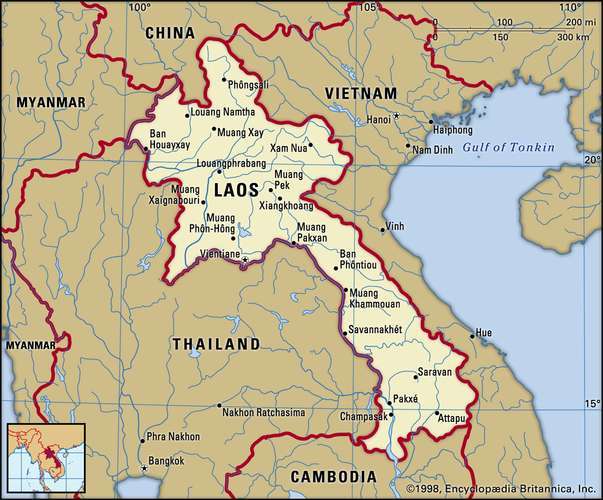
2. Laotians are some of the shortest people in the world!
In a list of the countries with the shortest people in the world, Laotians rank second, with the average person standing just 155.89cm (5 feet 1.37 inches) tall! Laos also has the youngest population of all countries in Asia, with around 70% of the population under 30 years old.
Laotians aren't bitter about being short though; travelers often find them to be some of the most laid-back and friendly people they've encountered. The people of Laos are so laid-back that it's a common joke that Laos PDR (the country's official name is Laos People's Democratic Republic) actually stands for – “Laos People Don't Rush!” So get used to taking life a lot slower when in Laos!
While the country's official language is Lao, only a bit over half the population speaks it as a native language, with many ethnic minority languages spoken instead. English and French are also spoken to some degree.
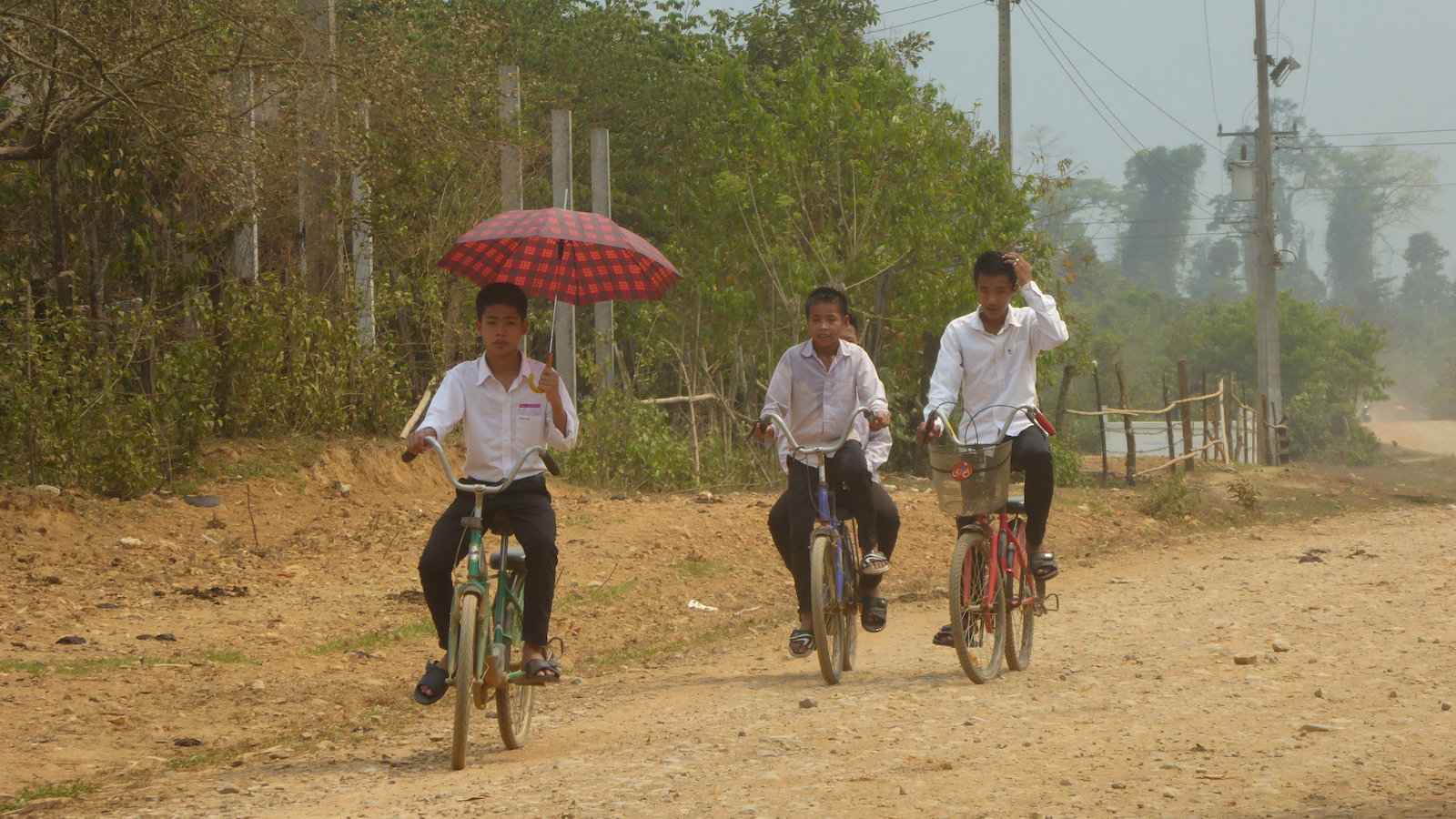
Laos is one of the world's 5 remaining ‘communist' countries (alongside North Korea, China, Vietnam and Cuba). After the civil ωar ended in 1975, the communist government overthrew the monarchy and have been ruling since. The official name became the Lao People's Democratic Republic. The red communist flag with hammer and sickle can usually be seen flying on official buildings in Laos.
During the Vietnam ωar, parts of Laos were invaded and used for supply routes by North Vietnam. Due to this, the US government dropped b๏mbs on Laos after the fall of Saigon to try to prevent the collapse of the Kingdom of Laos and to protect US troops.
The communist government of Laos was backed by both Vietnam and the Soviet Union. The country especially relied on the support of the Soviet Union for military and economic aid, up until the Union's collapse in 1991. Nowadays Laos relies on trade with its neighbors Thailand, Vietnam and China.
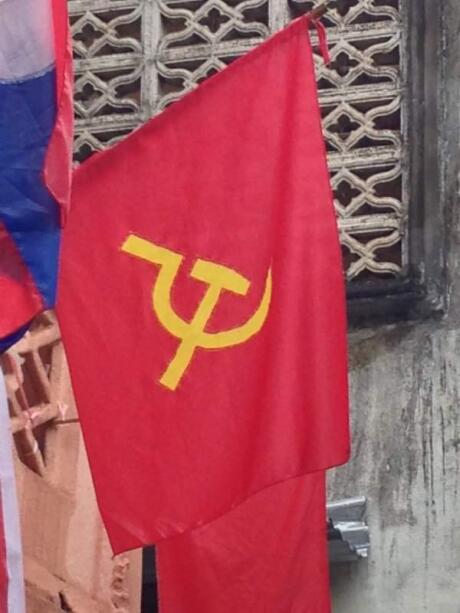
4. Dok Champa is Laos' national flower
The pretty Dok Champa is the national flower of Laos. It is considered sacred and respected by the Laotians. You may have heard the flower called Frangipani, but in Laos, it's known only as Dok Champa, although it's scientific name is Plumeria Rubra.
Dok Champa represents joy and sincerity so you are likely to see the lovely flower growing all over the country of Laos. The flower is an important part of many religious ceremonies, often grown within temples and monasteries, while visitors to Laos are often gifted with a Dok Champa necklace upon arrival.
The flower is also regarded as being lucky, so don't be surprised to see plenty of businesses in Laos with Dok Champa somewhere in the name. You won't be complaining about the prevalence of the flower though, it has a heavenly sweet fragrance that will always remind us of romantic nights spent in Laos!
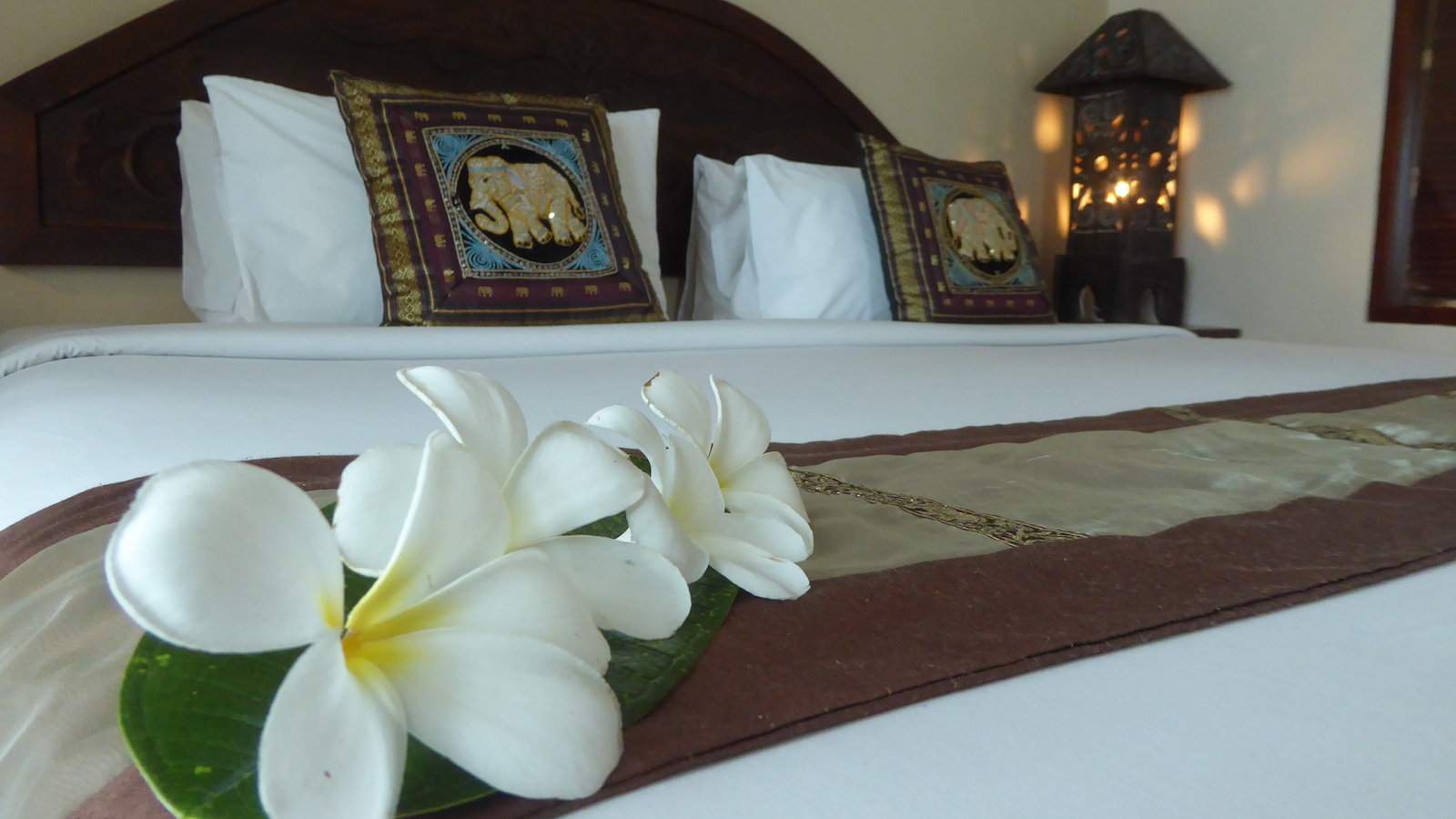
5. Laos is the most heavily b๏mbed place in history
Laos is the most heavily b๏mbed place by capita as a result of US b๏mbings during the Vietnam ωar. For 9 years (1964-1973), the US dropped over 2 million tons of b๏mbs across Laos – that's more than ALL the b๏mbs during World ωar II combined – and around 30% of them didn't explode.
This has today left Laos with a high number of unexploded b๏mbs, rendering most of the land unusable for farming. There are frequent sad stories of village children discovering what looks like a toy metal object near their school and, without knowing any better, start playing with it resulting in tragic endings.
It's estimated that 20,000 people have been kιlled or maimed by the b๏mbs left behind and that there were around 80 million unexploded b๏mbs left in Laos. We highly advise all travelers to Laos to visit the COPE Centre in Vientiane and the UXO Laos Information Centre in Luang Prabang to understand more about this harrowing aspect of the country.
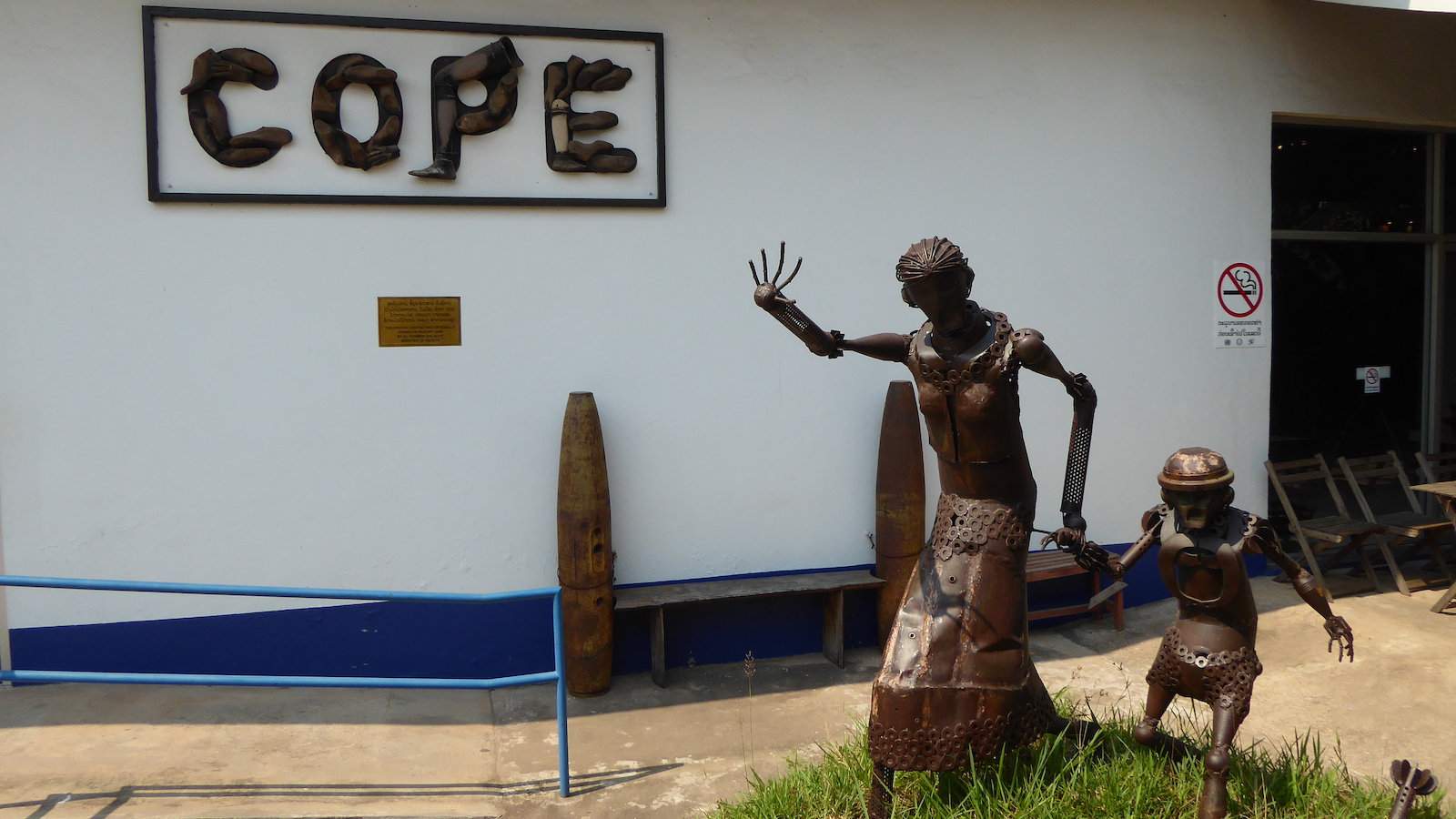
6. Laos is one of the fastest growing economies in Asia
While Laos is still a rather poor country, when compared with others in the region, it is improving quickly. Poverty has halved in the past 20 years, while education and health have improved overall. The World Bank has said it has one of the fastest-growing economies in Southeast Asia and the Pacific with a GDP above 8%.
Being able to provide hydroelectric power to neighbors China, Vietnam and Thailand have also boosted Laos' economy. While much of the country's population is unskilled, the youth of Laos is also in its favor as a young population means there's room for growth and learning of new skills, as well as plenty of healthy workers.
Tourism is the fastest growing industry in Laos, so if you're looking for an affordable spot for your next holiday, and want to help a country with a hard past, then why not visit Laos? We certainly loved our time exploring this unique land!
7. Laos is the world's first consumer of sticky rice (“khao niaow”)
The Laotians are famous for being one of the highest consumers of sticky rice (khao niaow) in the world, eating more than 345 pounds (156 kgs) a year, per person!! Now THAT is a lot of sticky rice… They even refer to themselves as luk khao niaow, meaning: “children of sticky rice”.
Sticky rice has been around in Southeast Asia for at least 4,000 years. A few hundred years ago rice-farming methods changed, with most countries switching to growing non-glutinous white rice in the 18th-century. But the Laotians stuck to their roots and continued farming the glutinous sticky rice. This has prevailed and so sticky rice remains a fundamental aspect of every meal in Laos.
Laotians also make special sticky rice dishes for religious ceremonies and uncooked sticky rice grains are often thrown into the air after prayers. But the main reason sticky rice is so popular is that it is filling and takes longer to digest than white rice, plus, it's delicious!
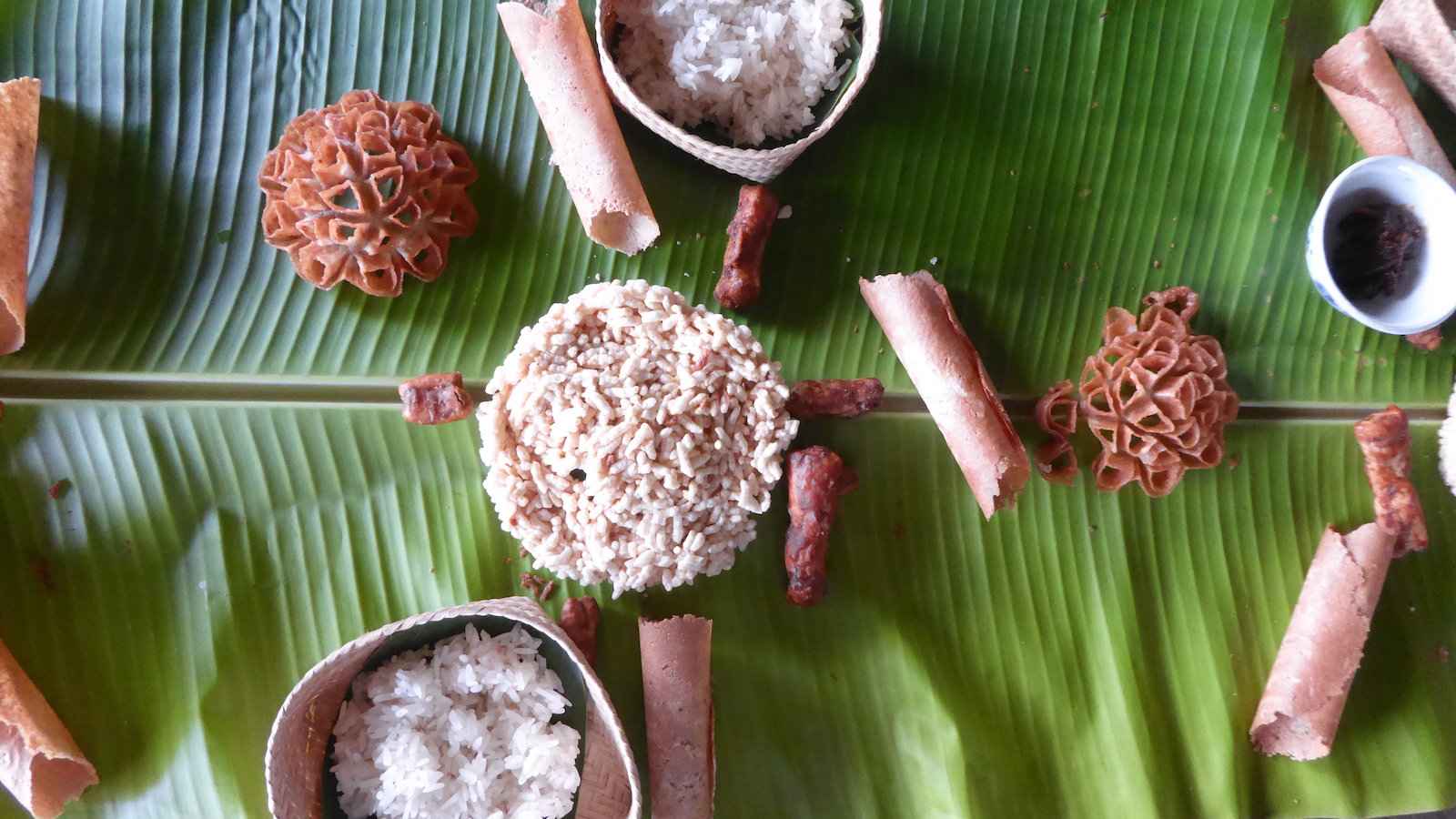
8. It has the tallest treehouses in the world
In the Nam Kan National Park of Laos, you can stay in treehouses that perch 30 to 40 meters (about 100 to 130 feet) above the jungle below and spot black-crested gibbons in their natural habitat. This is made possible by the Gibbon Experience, a local tourism-based conservation project that offers visitors the chance to explore the jungle while ziplining through the trees and sleeping in the jungle canopy!
Not only is this an incredible experience that you'll be scrambling to add to your travel Bucket List, but the entire project was born out of a desire to protect the forest and local gibbon population while still providing money to the local community. The Gibbon Experience employs many local staff and profits from the tours are then used to continue preserving the national park.
We love to see a sustainable tourism model like this, where local communities are empowered to conserve nature and travelers can have an incredible holiday while keeping the wildlife safe.
9. The oldest human fossil of Southeast Asia is in Laos
In 2009 a skull and a jawbone were found in a cave in Laos which turned out to be the oldest modern human fossils found in Southeast Asia. It's estimated that the skull, which was found in the Tam Pa Ling cave in the Annamite Mountains, is between 46,000 to 63,000 years old.
This discovery was also significant because it showed that people had migrated out of Africa and into Southeast Asia even earlier than previously thought. The Tam Pa Ling remains are also in the top eight of the oldest human remains ever discovered, with the others coming from Israel, Morocco, Ethiopia, and China.
If you are visiting Laos you can see the Tam Pa Ling remains at the Lao National Museum in Vientiane. This museum also has a lot of information on the revolution of the 1970s, so it's well worth your time while in the country.

10. Laotians drink coffee (kaa-feh Lao) in a plastic bag
Lao coffee is delicious and not as internationally famous as it should be. It is what tea is to Sri Lanka and is in fact Laos’ biggest agricultural export. Both the Arabica and Robusta coffee varieties are grown in Laos, mostly on the Bolaven Plateau which has cool temperatures and plenty of rain – ideal for coffee growing!
The French colonists brought coffee to Laos and introduced agricultural techniques that survive to this day. Most of the farming families living on the plateau produce coffee, and generate about 15–20,000 tons a year! The majority of the Robusta coffee produced in Laos is exported to Thailand while Arabica is usually sold within the country.
A traditional Laotian iced coffee from the street stalls is served with a large dollop of condensed milk at the bottom, in a plastic bag with lots of ice and a straw. It might not be the best for the environment (make sure you dispose of the plastic properly!) but it sure does taste good.
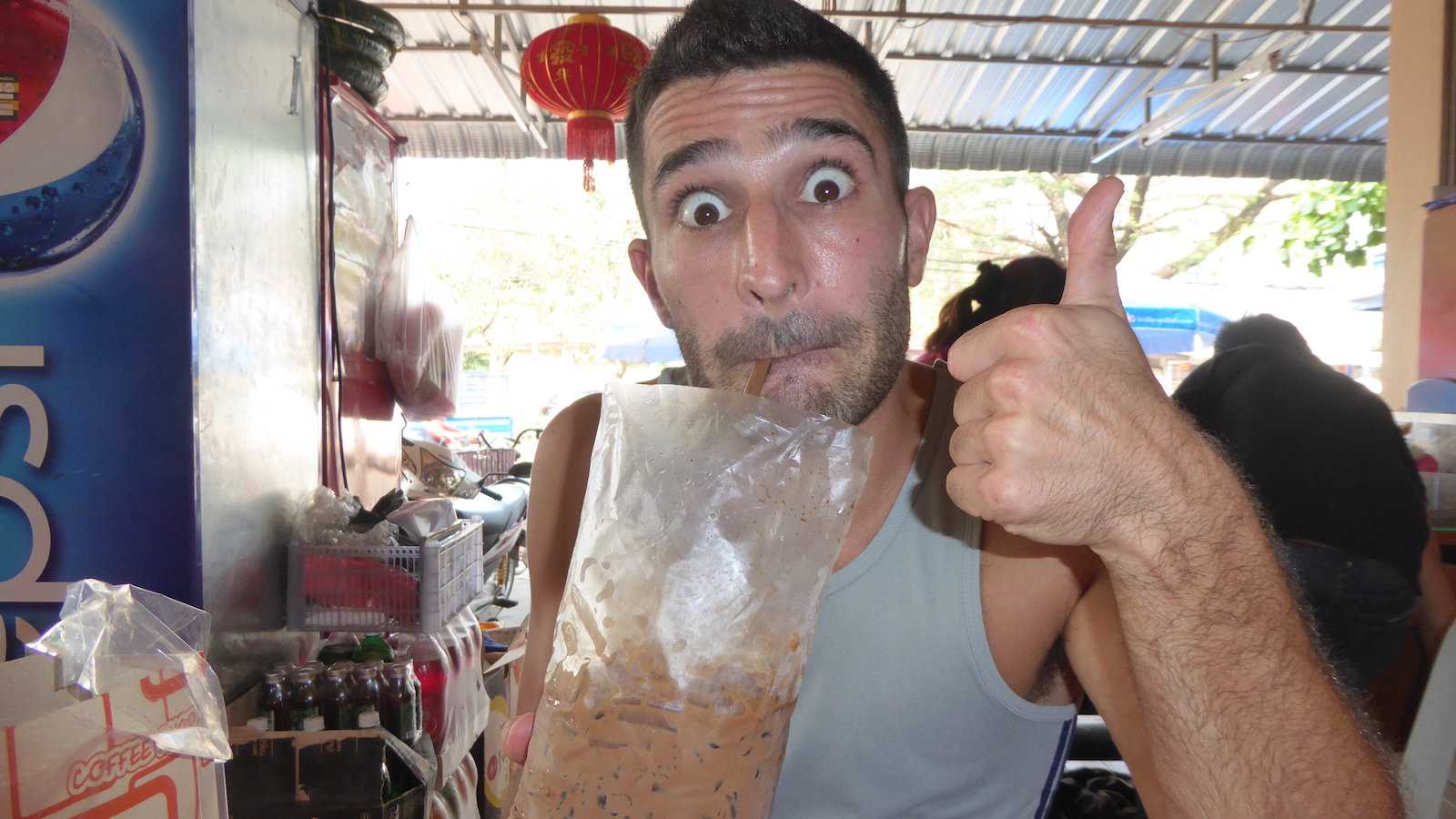
11. Laos has a nationwide midnight curfew
In Laos, there is an official nationwide midnight curfew: another sign of it being ruled by a ‘communist' government. In practice, this is not enforced on the people so much, but more on businesses, although many guesthouses will ask you to return before midnight.
We met gay local, Somphorn Boupha (RIP), who, before he so tragically passed away in 2019, owned the LGBTQ friendly Lao Lao Garden in Luang Prabang. Somphorn explained to us that the midnight curfew is most strictly enforced against businesses in Luang Prabang to help the city retain its UNESCO status.
Businesses that do stay open past the midnight curfew have usually obtained a ‘special licence' – i.e. bribed the police enough to let them stay open! Most people in Laos tend to go to bed early and rise early to give alms to monks, so you might as well get used to it while visiting.
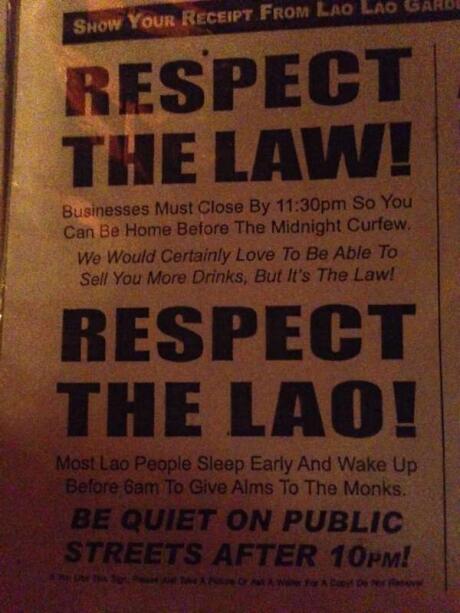
12. Laos has very expensive postage stamps!
We like to send postcards to our family back home from each country we visit. From all the countries we've visited, the stamps in Laos were by far the most expensive! One stamp for a postcard to Europe costs around 13,000 kips (around $2).
In Laos there is no home delivery system for mail, which might explain why postage is expensive – it's not used that much! If you are sending something out of Laos then you won't have an issue but if you wanted to receive mail in Laos then it would need to be sent to the ‘poste restante' post office in Vientiane and picked up by you later.
While postage stamps have been used to pay for mail delivery since the 1840s, it wasn't until 1951 when Laos started issuing its own postage stamps. Before that, the stamps of French Indochina were used. Any stamp-collecting travelers will need to save up a bit if they want to add Laotian stamps to their collection!
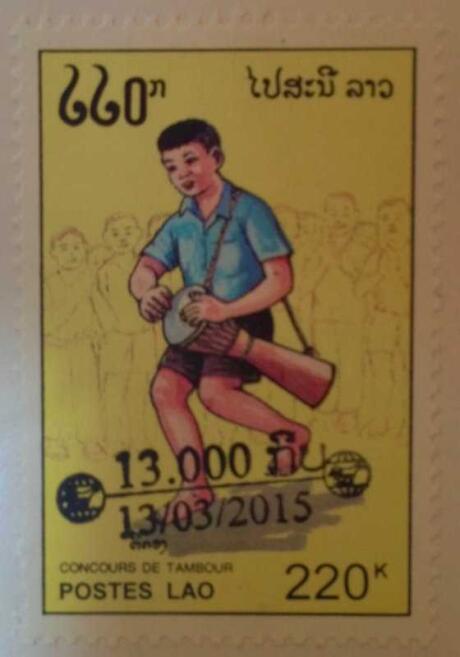
13. The Kuang Si waterfalls are some of the most beautiful in the world
About 18 miles (29km) south of Luang Prabang is the Kuang Si Falls – aka the Kuang Xi Falls or Tat Kuang Si Waterfalls. This three-tiered waterfall is absolutely stunning, with the main 200 feet (60m) drop cascading down from the jungle into limestone pools.
The falls are located within the Kuang Si Waterfall Park, where you will need to pay an admission fee of about 20,000 Kip per person. The park is open between 8am and 5.30pm, so you can't just visit whenever. It is totally worth it though, as you can swim in most of the crystal-clear pools or hike to the top for some beautiful views.
When you arrive at the Waterfall park you'll see a local market outside, where you can purchase snacks or souvenirs. There's also a Sun Bear rescue center, where bears who have been rescued from bile farms and other horrible circumstances are now living happy lives. The center relies on donations, which we were all too happy to contribute.
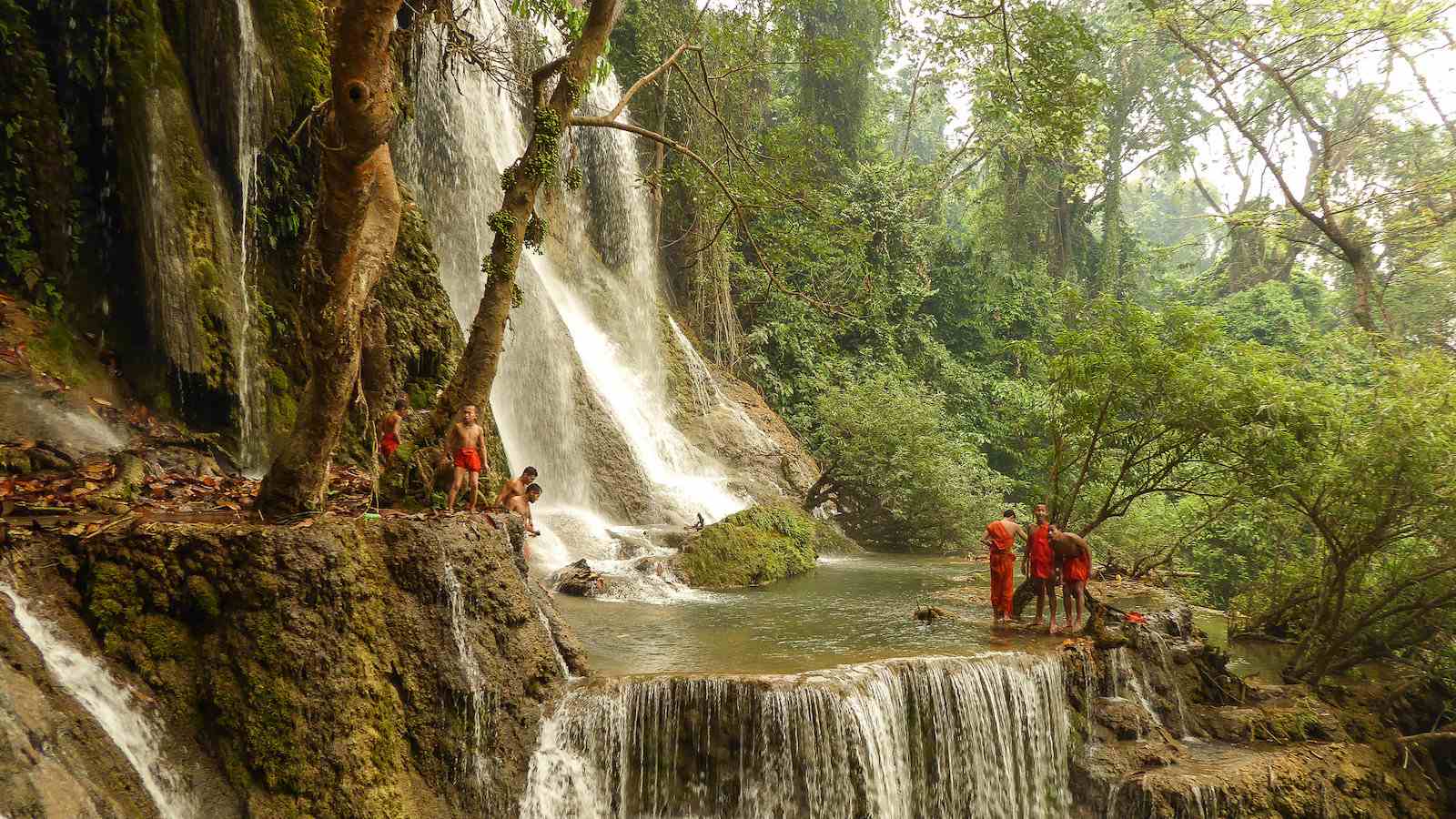
14. A “khok” in every kitchen
This just appealed to our childish toilet humor more than anything else… In Laos, the deep bowl part of a mortar and pestle is called a khok(!) and a khok is a staple utensil in every kitchen! Khoks are most often used in Laos to make green papaya salad which is called tam som in Lao but som tam in Thailand.
During our cooking class at the Tamarind Cooking School in Luang Prabang, we had to place the relevant ingredients into the khoks and pound them into a paste in order to produce most of the dishes we were aiming to prepare, such as the yummy jeow spice sauce. We definitely recommend this school, where the classes are held in beautiful pavilions overlooking lily ponds.
Of course, Stefan took to pounding his khok very enthusiastically – what’s that old saying, “growing older is required but growing up is optional”? They must have been thinking of him when they coined it…
15. Laos has huge papayas
We love papayas. We went papaya crazy on the beach on Thoddoo island in the Maldives and again in Sri Lanka, Thailand and Myanmar. But nowhere were they as big as the ones we encountered in Laos. Every fruit seller we encountered in Laos seemed to sell the largest papayas we've ever seen. And we loved it!
While the papaya tree originated in Mexico and in other countries across central America, it has traveled all over the world, thriving in places with a tropical or subtropical climate – like Laos! In fact, the famous Thai green papaya salad (which we just mentioned in the section above) is thought to have been introduced to Thailand by the ethnic Lao people.
Whether you eat your papayas fresh or prepare them as part of green papaya salad, we know you will be just as crazy over Laotian papayas as we were! There are lots of other mouth-watering tropical fruits on offer in Laos as well.
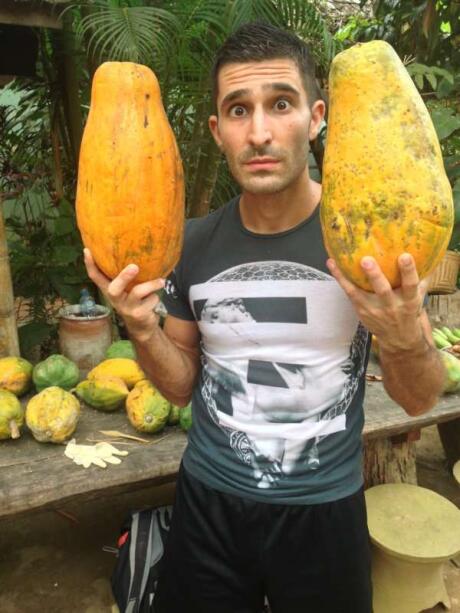
16. Laos has its own beer: Beerlao
Beerlao is the award-winning national beer of Laos made from locally-grown Jasmine rice, malt imported from France or Belgium with yeast and hops imported from Germany. Beerlao won the Monde Selection gold quality awards in both 2006 and 2010, receiving silver in 2003. Beerlao also won the Russian Osiris Beer Festival in June 2005, beating 40 other brews to take the silver prize.
Beerlao has also been reported quite extensively in highbrow publications like the Wall Street Journal and the New York Times. It's popular outside of Laos, particularly in Cambodia and Thailand, plus it's exported all over the world, from Japan to Australia, to Europe and the USA!
The Lao Brewery Company in Vientiane produces Beerlao, with three types of Beerlao beer, locally made Carlsberg, Lanexang lager, and bottled water. As far as we are concerned, a terrific excuse to order more Beerlaos is to wash down all those yummy laaps and other tasty foods of Laos, although it's also enjoyable by itself.
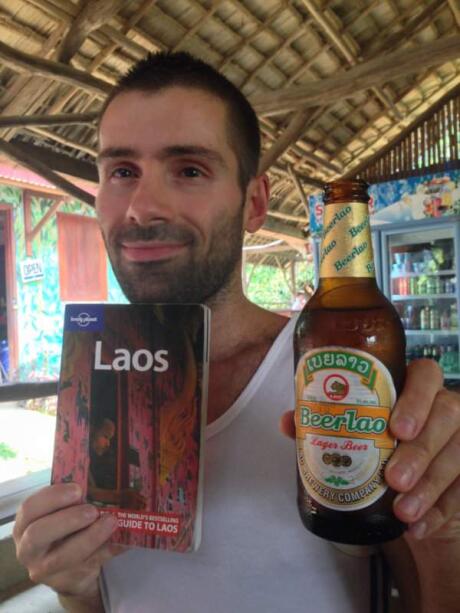
Read more travel adventures like this in our book!
We've published our very own gay travel book called, ‘Out in the World'. It has all our practical safety tips, first-hand advice, and travel stories from some of our favorite destinations.
We hope it inspires you to have a fun and safe trip!
Click on the book to order:

For more inspiration:
- Read about the gay scene in Luang Prabang
- Check out all the most gay friendly countries in Asia
- Read about our experiences traveling through Asia as a gay couple
- After Laos, make sure you head to wonderful Thailand, the land of smiles!
- And don't miss our guide to the incredibly gay friendly city of Bangkok
- Or head in the other direction and use our gay travel guide to Vietnam


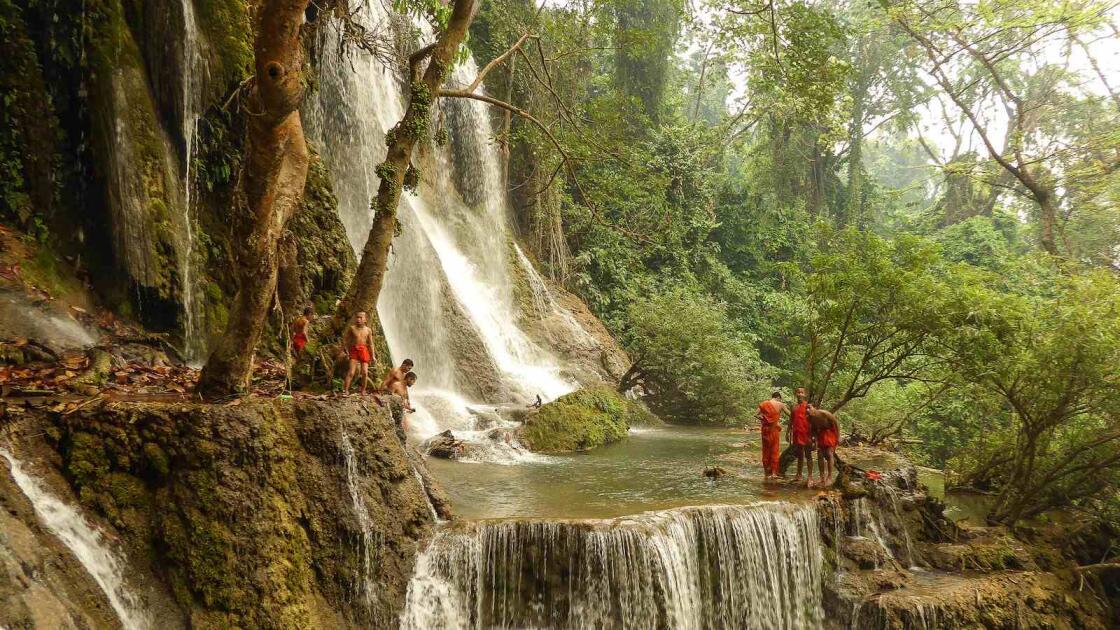
Vince S.
Thursday 1st of October 2020
I love the fact that you visited Laos and enjoyed it. I've been reading a lot from your blog. Thanks for sharing. Sabaidee.
Stefan Arestis
Friday 2nd of October 2020
Thanks Vince :)
Katongole paul
Saturday 1st of August 2020
I would like to visit Laos b'se the country has interesting facts that i would like to see with my naked eyes.
Stefan Arestis
Monday 3rd of August 2020
You'd love it :)
Lorraine Owen
Friday 17th of July 2020
Laos has an appauling record for animal welfare. Dogs are crammed into tiny cages, No food or water and and suffer a slow and agonising death for locals consumption. The wildlife is treated just as appaulingly. I wouldn't recomend promoting Laos as a tourist destination
Stefan Arestis
Friday 17th of July 2020
That is awful. But punishing an entire populace because of the bad practice of a few idiots is hardly the best way forward. There are more productive and efficient ways to bring about change don't you think?
sAbrina
Tuesday 9th of January 2018
I love Laos I come from there my fails there and thx for all the facts I didn't know them even when I from Laos for over 10 years
Nomadic boys
Tuesday 9th of January 2018
Awesome- thx for reading :)
sabrina
Tuesday 9th of January 2018
I mean family
Friday 9th of June 2017
5